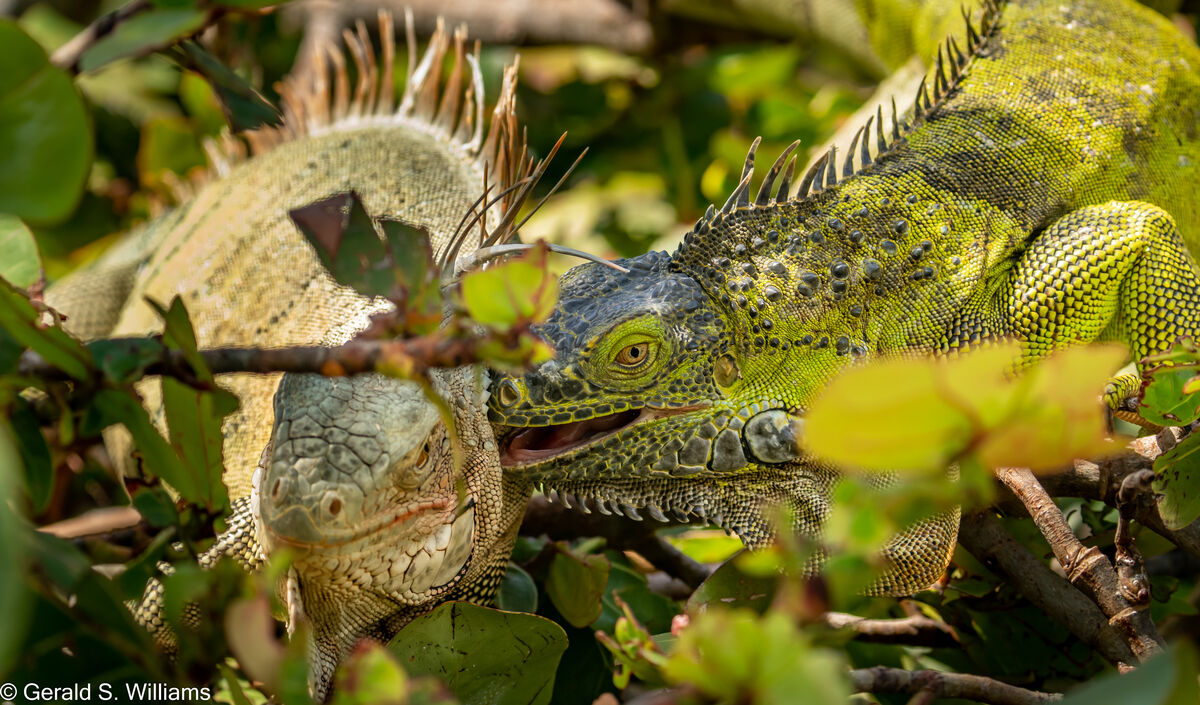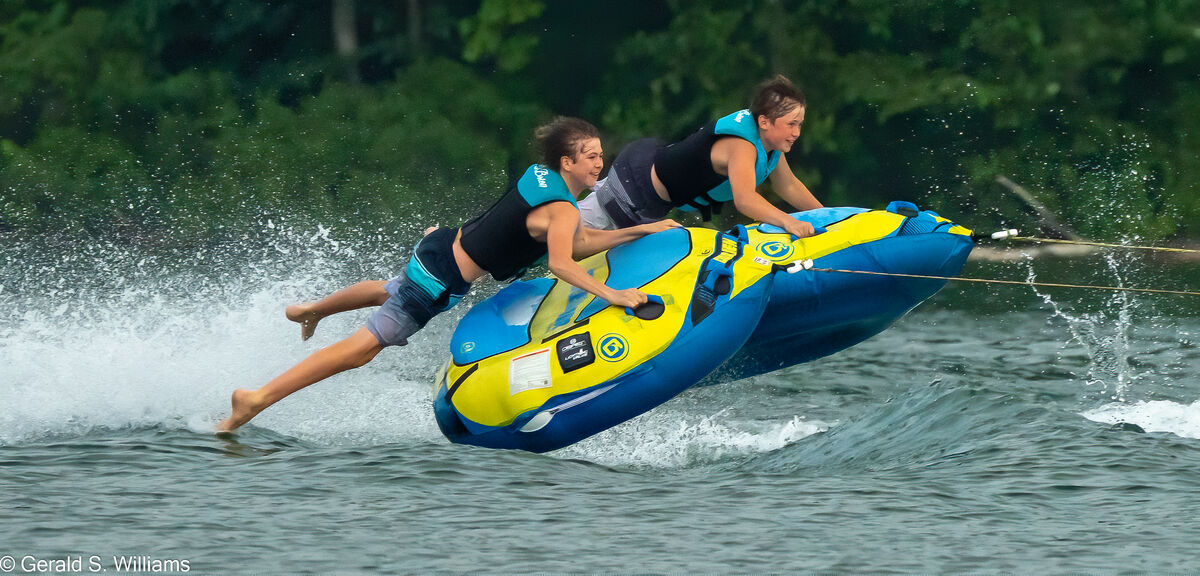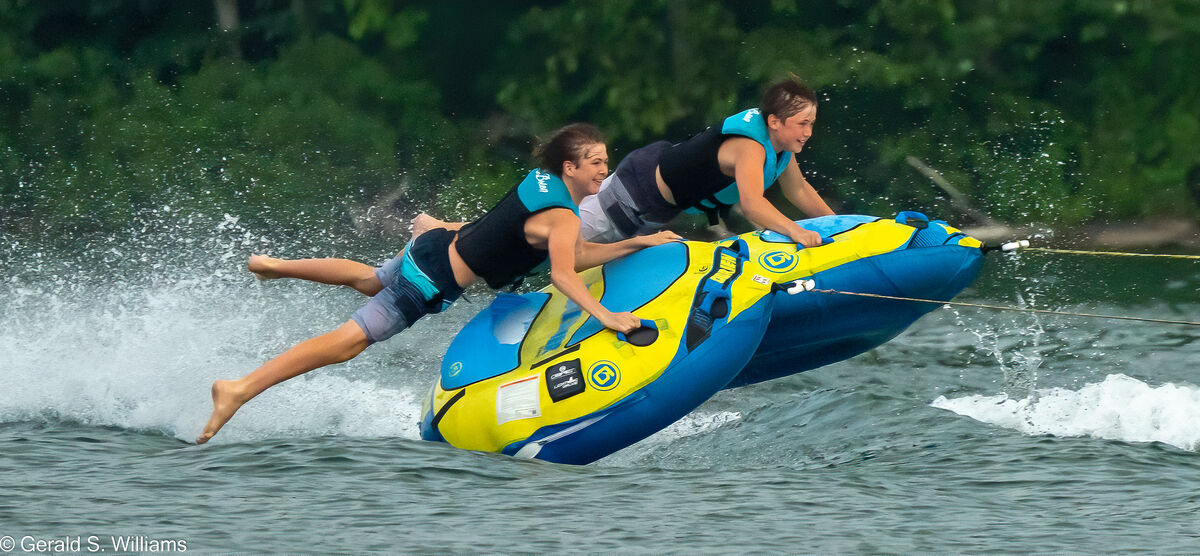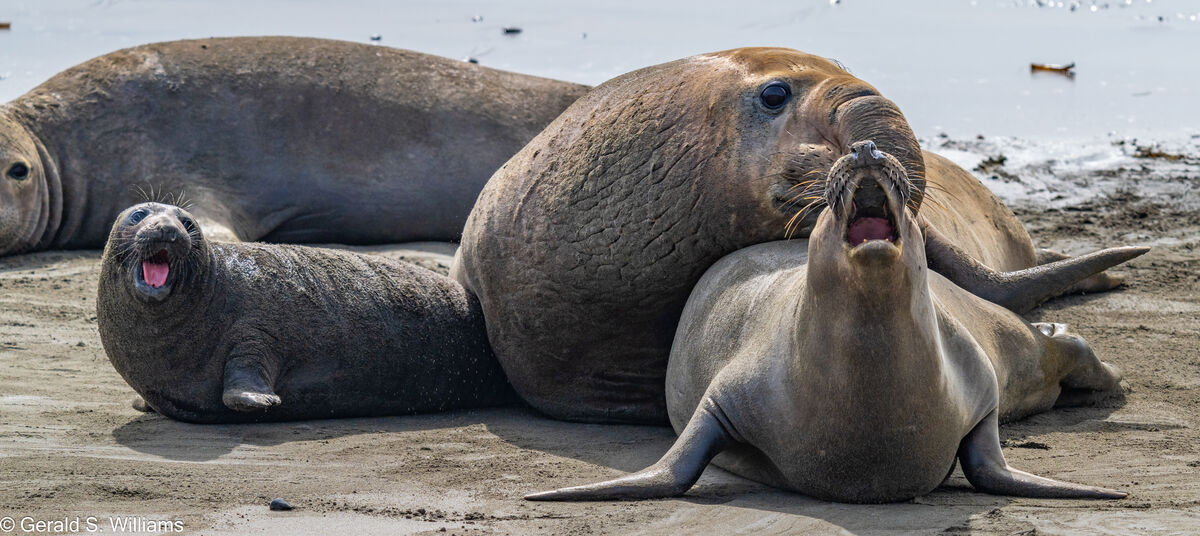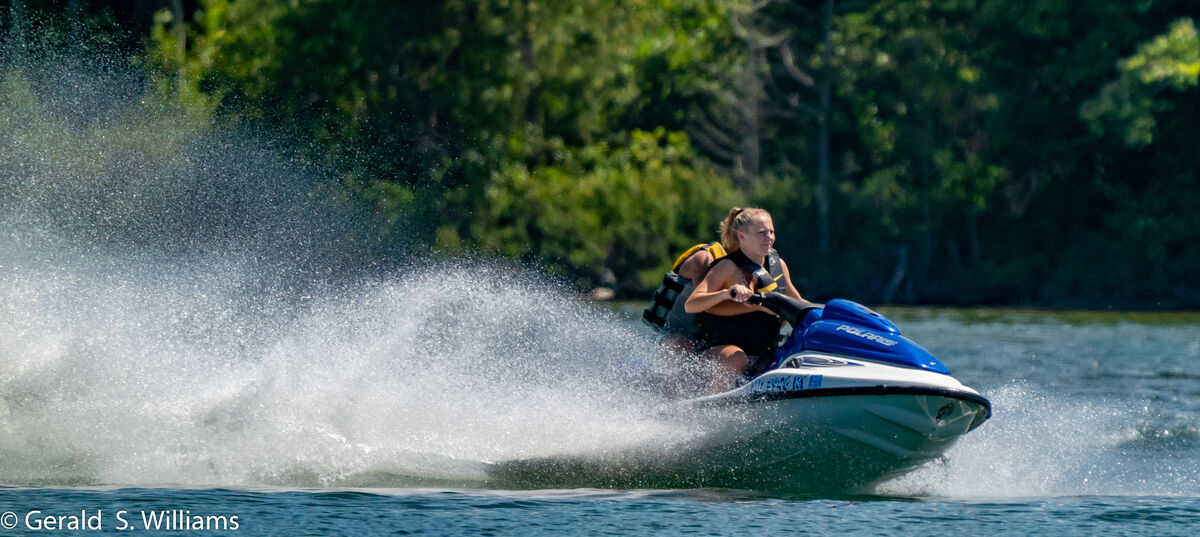Considering Sony 100-400 g lens for wildlife photography
Aug 23, 2022 10:25:58 #
fjo
Loc: Georgetown Texas
Any experiences with the topic lens? Comments and opinions will be appreciated.
Thanks,
Semper Fi
Thanks,
Semper Fi
Aug 23, 2022 10:36:08 #
Aug 23, 2022 10:40:41 #
My two main wildlife/nature telephotos today are the Nikon 100-400mm S lens in a Z mount and my Nikon 500mm f5.6 pf lens, F mount, both with matching Nikon Teleconverters. 400mm as a general statement is too short.
Aug 23, 2022 10:56:59 #
Go for the Sony 200-600mm G or the Sigma 150-600mm. The 100-400 is a bit short. I own the Sony 200-600m and there are times I wish I had the 1.4X .
Aug 23, 2022 10:57:42 #
I agree. I use a 200~500 and do a lot of cropping. The D850 allows me to that satisfactorily.
Aug 23, 2022 11:28:04 #
fjo wrote:
Any experiences with the topic lens? Comments and opinions will be appreciated.
Thanks,
Semper Fi
Thanks,
Semper Fi
Best lens I own. Bright, sharp, relatively light.
Best long lens Sony makes. I use it with a 1.4 teleconverter. Consider buying used~$2000. https://www.mpb.com/en-us/product/sony-fe-100-400mm-f-4-5-5-6-gm-oss
Aug 23, 2022 11:33:03 #
The advantage of the 100-400 over the 200-600 is size (smaller diameter and shorter especially if not zoomed out) and weight (almost two pounds). I have the 100-400 and on the occasions I need extra reach I switch to JPEG and activate Sony's CIZ (Clear Image Zoom), which I find gives excellent results at 1.4 and is still good at 2.0. The 100-400 is easy to carry and hand hold, so I'm very pleased with this approach, especially since using the CIZ "teleconverter" entails no loss of light and does not require mounting/dismounting the lens in the field.
Tamron does have a 150-500 which has had good reviews and, if I'm not mistaken, falls between the other two in heft.
Here are the results from an exceptionally thorough comparison of the two Sony lenses by Timothy Mayo:
Conclusion
Both lenses are exceptionally good and although only the 100-400 is badged as a G Master lens, the 200-600 G would certainly not bring any shame to the GM label if Sony had decided to use it.
If you are shooting wildlife then most likely you are going to want as much reach as possible and although you can add the 1.4x teleconverter to take the 100-400 to 560mm / f/8, you will see a noticeable drop in image quality especially compared to the 200-600 at 600mm f/6.3. You’ll also now be shooting at f/8 and will need to crank the ISO a little higher.
If you often shoot using a gimbal then you’ll also find that the 200-600 balances much better since the barrel does not extend when you zoom and throw the balance off. With the 100-400 on a gimbal you’ll either need to fix the zoom and then balance it, or put up with the lens being off balance.
The smooth internal zoom of the 200-600 which features a very short zoom throw also helps to keep your subject in the frame and I find it much quicker to use compared to the 100-400. When you zoom with the 100-400 the weight also changes which affects the balance, and if you are shooting skywards there is also a lot more resistance.
Shooting from a hide with an internal zoom is also beneficial since there is no movement to scare away your subject, whilst zooming in and out with the 100-400 can be risky if your subject doesn’t know that you are there or is very nervous.
The 100-400 is the lightest lens of the two weighing in at 1596g (with tripod foot and hood attached). Without extending the zoom it measures 205mm in length, extending the zoom to 400mm takes it to 285mm. The lens has a maximum diameter of 93.9mm. Adding the 1.4x teleconverter will add an additional 169g in weight and also adds 16mm in length. Without a doubt if you are travelling a lot then this is the lens you will want in your backpack.
The 200-600 weighs in at 2397g (with tripod foot and hood attached), making it a good 800g heavier than the 100-400. It measures 318mm in length with a maximum diameter of 111.5mm. If you are used to shooting with the 100-400 or a lighter lens then you will most definitely feel the weight of the 200-600, especially if you are handholding. But if you are used to the weight of a big prime lens with an SLR camera attached then it will probably feel like a feather to you.
With a minimum focus distance of only 0.98m (3.22 ft) the 100-400 is the best choice for close-up photography, since the 200-600 requires 2.4m (7.88 ft) to autofocus correctly. So if you enjoy shooting butterflies, dragonflies and other bugs then the 100-400 is probably the best lens for you.
The 100-400 does handle chromatic aberration a lot better than the 200-600, it shows no signs of CA in either the center of the frame or towards the edges. The 200-600 shows signs of CA both in the center of the frame and towards the edges where it becomes more pronounced. With lens corrections turned on CA is minimized but still visible, so you may need to apply further CA removal in post if shooting subjects with high contrast. Thankfully I’ve not spotted any CA in the real world images that I’ve shot with the 200-600 so far, but I will certainly be keeping an eye out for this.
If money was no object I would own both of these lenses since they both have their own unique qualities and both are capable of capturing some amazing images. For me personally I now prefer shooting with the 200-600 mainly for the extra reach and internal zooming. My shoulder muscles are just going to have to grow to handle the extra weight!
Whichever lens you choose I don’t think you are going to be disappointed one bit.
https://www.alphashooters.com/compare/sony-fe-200-600-vs-fe-100-400-gm/
Another thoughtful perspective:
If you are looking [for] a bird lens or wildlife strictly then the 200-600 is superior. If your looking for a jack of all trades birding lens with the 1.4 ext that is smaller, packable as well as a macro, landscape, butterfly and general use telephoto the 100-400 is preferable. For the most part the 100-400 makes up for less [focal] length by being useful in a lot of ways. It's more expensive, but if I had to carry one on a hike there would be no choice 100-400, unless I was shooting birds only and it was a short hike. 200-600
https://www.dpreview.com/forums/thread/4421840
Tamron does have a 150-500 which has had good reviews and, if I'm not mistaken, falls between the other two in heft.
Here are the results from an exceptionally thorough comparison of the two Sony lenses by Timothy Mayo:
Conclusion
Both lenses are exceptionally good and although only the 100-400 is badged as a G Master lens, the 200-600 G would certainly not bring any shame to the GM label if Sony had decided to use it.
If you are shooting wildlife then most likely you are going to want as much reach as possible and although you can add the 1.4x teleconverter to take the 100-400 to 560mm / f/8, you will see a noticeable drop in image quality especially compared to the 200-600 at 600mm f/6.3. You’ll also now be shooting at f/8 and will need to crank the ISO a little higher.
If you often shoot using a gimbal then you’ll also find that the 200-600 balances much better since the barrel does not extend when you zoom and throw the balance off. With the 100-400 on a gimbal you’ll either need to fix the zoom and then balance it, or put up with the lens being off balance.
The smooth internal zoom of the 200-600 which features a very short zoom throw also helps to keep your subject in the frame and I find it much quicker to use compared to the 100-400. When you zoom with the 100-400 the weight also changes which affects the balance, and if you are shooting skywards there is also a lot more resistance.
Shooting from a hide with an internal zoom is also beneficial since there is no movement to scare away your subject, whilst zooming in and out with the 100-400 can be risky if your subject doesn’t know that you are there or is very nervous.
The 100-400 is the lightest lens of the two weighing in at 1596g (with tripod foot and hood attached). Without extending the zoom it measures 205mm in length, extending the zoom to 400mm takes it to 285mm. The lens has a maximum diameter of 93.9mm. Adding the 1.4x teleconverter will add an additional 169g in weight and also adds 16mm in length. Without a doubt if you are travelling a lot then this is the lens you will want in your backpack.
The 200-600 weighs in at 2397g (with tripod foot and hood attached), making it a good 800g heavier than the 100-400. It measures 318mm in length with a maximum diameter of 111.5mm. If you are used to shooting with the 100-400 or a lighter lens then you will most definitely feel the weight of the 200-600, especially if you are handholding. But if you are used to the weight of a big prime lens with an SLR camera attached then it will probably feel like a feather to you.
With a minimum focus distance of only 0.98m (3.22 ft) the 100-400 is the best choice for close-up photography, since the 200-600 requires 2.4m (7.88 ft) to autofocus correctly. So if you enjoy shooting butterflies, dragonflies and other bugs then the 100-400 is probably the best lens for you.
The 100-400 does handle chromatic aberration a lot better than the 200-600, it shows no signs of CA in either the center of the frame or towards the edges. The 200-600 shows signs of CA both in the center of the frame and towards the edges where it becomes more pronounced. With lens corrections turned on CA is minimized but still visible, so you may need to apply further CA removal in post if shooting subjects with high contrast. Thankfully I’ve not spotted any CA in the real world images that I’ve shot with the 200-600 so far, but I will certainly be keeping an eye out for this.
If money was no object I would own both of these lenses since they both have their own unique qualities and both are capable of capturing some amazing images. For me personally I now prefer shooting with the 200-600 mainly for the extra reach and internal zooming. My shoulder muscles are just going to have to grow to handle the extra weight!
Whichever lens you choose I don’t think you are going to be disappointed one bit.
https://www.alphashooters.com/compare/sony-fe-200-600-vs-fe-100-400-gm/
Another thoughtful perspective:
If you are looking [for] a bird lens or wildlife strictly then the 200-600 is superior. If your looking for a jack of all trades birding lens with the 1.4 ext that is smaller, packable as well as a macro, landscape, butterfly and general use telephoto the 100-400 is preferable. For the most part the 100-400 makes up for less [focal] length by being useful in a lot of ways. It's more expensive, but if I had to carry one on a hike there would be no choice 100-400, unless I was shooting birds only and it was a short hike. 200-600
https://www.dpreview.com/forums/thread/4421840
Aug 23, 2022 12:19:27 #
Aug 23, 2022 13:02:11 #
fjo wrote:
Any experiences with the topic lens? Comments and opinions will be appreciated.
Thanks,
Semper Fi
Thanks,
Semper Fi
I have that lens and it is sharp, but even with a 1.4tc it is short for some shots. I bought the Sony 200 - 600 G and it delivers that extra reach.
Aug 23, 2022 23:30:00 #
ORpilot wrote:
Go for the Sony 200-600mm G or the Sigma 150-600mm. The 100-400 is a bit short. I own the Sony 200-600m and there are times I wish I had the 1.4X .
I chose the Sony 200-600mm f5.6-6.3 for wildlife and action sports. I considered the Sony 100-400mm but when you need it, there is no substitute for the longer reach. I also use my 200-600mm with Sony 1.4X and 2X Teleconverters and still get excellent results.
The main advantage of the Sony 100-400mm vs the Sony 200-600mm is that the 100-400mm is smaller and lighter, easier to pack in smaller bags and carry around all day.
The main advantages of the Sony 200-600mm over the Sony 100-400mm is that the 200-600mm is an internal zoom and doesn't extend when you zoom like the 100-400mm does, and the 200-600mm has a very short rotation turn to full zoom, whereas the 100-400mm takes a much longer rotation for full zoom. I can handhold the Sony 200-600mm and manage a full zoom with just a short movement of one finger.
I am a longtime pro, and tried both the Sony 100-400mm and the 200-600mm and settled on the 200-600mm and have no regrets. There are good third party 150-600mm lenses also for Sony, but the Sony 200-600mm outperforms them all.
Here a few shots with my Sony 200-600mm:
1) A Great White Egret bends its neck to clean its feathers on the Caribbean Island of Sint Maarten/St. Martin. Sony A1, Sony 200-600mm lens, 591 mm.
2) a tight crop from the same shot of the Great White Egret. A1, 200-600mm lens, 591mm
3) A Snowy Egret takes off from its watery perch in Sint Maarten/St. Martin .Sony A1, Sony 200-600mm lens, 319mm, 1/4000 sec.
4) Wild Iguanas share some affection on Sint Maarten/St. Martin. Sony A1, Sony 200-600mm lens, 600mm
5) and 6) Kids get pulled by a fast speedboat on Brookings Lake, Manistee National Forest, Michigan. Sony A1, Sony 200-600mm lens, 600mm
7) Famed Monument Valley, scene of countless movies, TV shows, Commercials, Navajo Lands, Arizona/Utah border. Sony A7RIV, Sony 200-600mm lens, 250mm
8) Wild Elephant Sea Lion rookery on the Pacific Ocean coastline, California. A pup squeals as it tries not to get crushed by a 5000 pound amorous bull going after one of it cows . This pup got squeezed but survived, they dont always survive the bulls. Sony A7RIV, Sony 200-600mm lens, 600mm
9) Sony A9 with 200-600mm lens and 2x Teleconverter, 1200mm. Jet skier on Brookings Lake, Manistee National Forest, Michigan
I have no problem carrying my 200-600mm in the field, it is well balanced and i am used to the weight. A majority of Wildlife pros polled prefer using the excellent Sony 200-600mm over using the excellent 100-400mm for many reasons, but mainly for its reach and internal zoom. I am one of the those pros.
Many love their 100-400mm, but for this pro there is NO substitute when you need the reach and want to utilize all your image quality without going into APS-C mode or clear-image zoom .
I have owned the Sony 200-600mm since the first USA shipments in August 2019 (Sony Pro Support Member's Priority) and I have used it all over the world and never once regretted it or wished for the excellent 100-400mm instead. Either one is excellent.
Alpha Shooters : Sony 200-600 G vs 100-400 GM Review & Comparison
https://www.alphashooters.com/compare/sony-fe-200-600-vs-fe-100-400-gm/
FYI, I have owned Sony A6500, A7RII, A7RIII, A7III, A9, and currently own Sony A1, A7RIV, A7SIII.
Cheers and best to you.
Aug 24, 2022 00:28:41 #
Aug 24, 2022 01:04:02 #
Aug 24, 2022 07:42:54 #
Retired CPO wrote:
I agree. I use a 200~500 and do a lot of cropping. The D850 allows me to that satisfactorily.
Love my 200-500mm Nikon. It may have been underpriced!
Aug 24, 2022 07:52:28 #
ORpilot wrote:
Go for the Sony 200-600mm G or the Sigma 150-600mm. The 100-400 is a bit short. I own the Sony 200-600m and there are times I wish I had the 1.4X .
I agree! I have the Sony 200-600 and love it! My daughter has the 100-400 and likes that it’s less heavy but she’s not into wildlife photography as much as me.
Aug 24, 2022 07:57:52 #
MDI Mainer wrote:
The advantage of the 100-400 over the 200-600 is s... (show quote)
Great info on both these Sony lenses. One thing you left out is the Sony 100-400 is better glass.
Sony 100-400 f/4.5 – 5.6 vs Sony 200-600 f/5.6 – 6.3
I had the Sony 100-400 with a 1.4 tc when I went to Kenya in 2019. I don't think I could hand hold the 200-600 as it is heavier and larger. I am very happy with what I have for birding.
The first image has the male opsrey with fish in his talons bringing it to the nest. On the lower part of the image is one of the babies.
The next image, I did change the sky, it was my sky from a different day. Both are cropped taken with the Sony 100-400. Both were hand held.
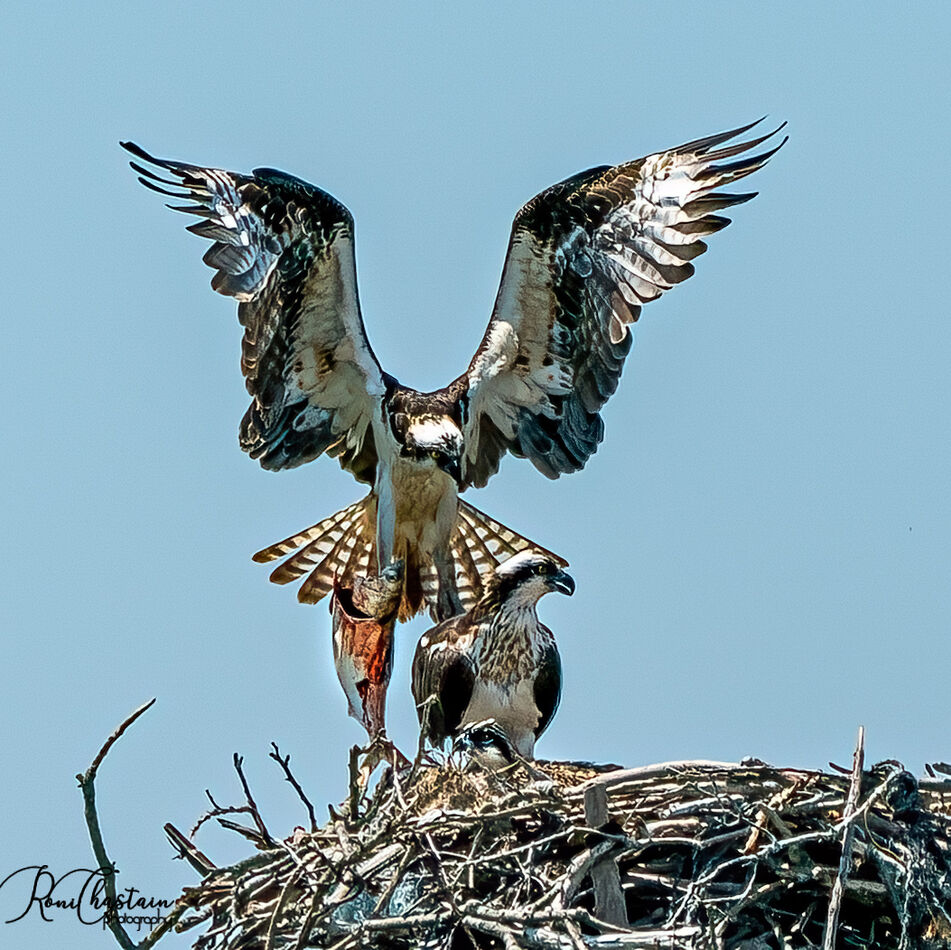
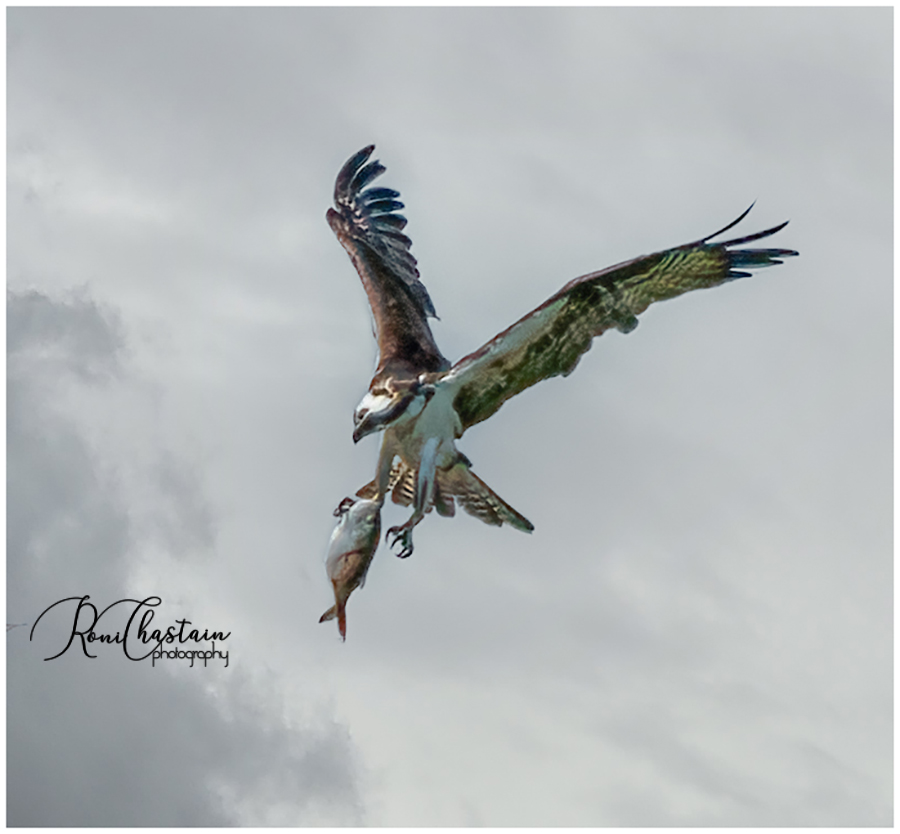
If you want to reply, then register here. Registration is free and your account is created instantly, so you can post right away.







